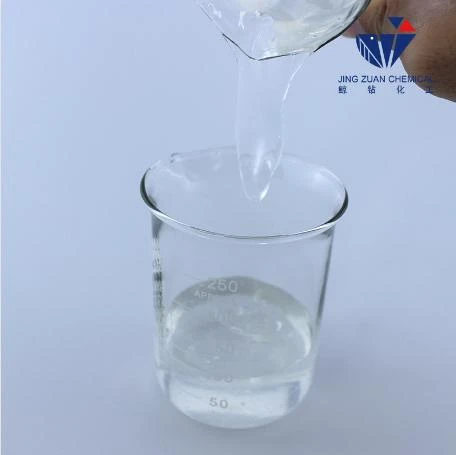
Dec . 21, 2024 07:23 Back to list
hydroxyethyl cellulose
The Versatility of Hydroxyethyl Cellulose Applications and Benefits
Hydroxyethyl cellulose (HEC) is a non-ionic, water-soluble polymer derived from cellulose, a natural biopolymer found in plant cell walls. Due to its unique properties, HEC has garnered significant attention across various industries, including pharmaceuticals, cosmetics, food, and construction. This article explores the features, applications, and benefits of hydroxyethyl cellulose, highlighting its importance in modern formulations.
Properties of Hydroxyethyl Cellulose
HEC is known for its thickening, gelling, and film-forming properties. It is produced through the alkaline etherification of cellulose, resulting in a polymer that retains the fundamental structure of cellulose while possessing enhanced solubility in water. The molecular weight of HEC can vary, influencing its viscosity and the manner in which it interacts with other substances.
One of the most remarkable features of HEC is its ability to form clear, viscous solutions. This characteristic makes it an ideal candidate for formulations requiring stability and clarity. Additionally, HEC is compatible with a wide range of surfactants and other additives, which enhances its utility in numerous applications.
Applications of Hydroxyethyl Cellulose
In the pharmaceutical sector, HEC is utilized as a binder and a stabilizer in various drug formulations. It is commonly found in tablets and capsules, where it aids in maintaining the integrity of the dosage form and enhancing the release profiles of active ingredients. HEC is also employed as a thickening agent in ophthalmic preparations and as a rheology modifier in topical formulations, ensuring a smooth application and controlled release of medicaments.
2. Cosmetic and Personal Care Products
The cosmetic industry takes advantage of HEC's emulsifying and thickening properties. HEC is frequently used in lotions, creams, gels, and shampoos, providing desirable textures and enhancing the sensory experience for consumers. Its ability to retain moisture also makes it beneficial in skin care products, where it helps in hydration and skin protection. Furthermore, HEC is often used as a film-forming agent in hair styling products, providing hold without creating stiffness.
hydroxyethyl cellulose

3. Food Industry
HEC is gaining popularity in the food industry, particularly as a thickener and stabilizer in various food products. Its use in salad dressings, sauces, and processed foods helps improve texture and consistency. Additionally, HEC can be employed as a fat replacer in low-fat products, helping maintain mouthfeel without the added calories.
4. Construction and Building Materials
The construction industry also benefits from HEC, where it is used as a water-retention agent in dry-mix mortars and grouts. By improving the workability of these materials and preventing premature drying, HEC enhances durability and performance. Its thickening properties help ensure a uniform consistency, making it easier to apply and manipulate during construction processes.
Benefits of Hydroxyethyl Cellulose
The use of hydroxyethyl cellulose offers numerous benefits across industries. As a naturally derived polymer, it provides a safer alternative to synthetic additives, appealing to eco-conscious consumers and companies. HEC is also biodegradable, contributing to a reduced environmental impact when compared to petroleum-based thickening agents.
Moreover, HEC’s versatility allows it to work effectively with a variety of other ingredients, making it an invaluable component in formulating products. Its ability to enhance the sensory attributes of formulations—such as texture, appearance, and stability—has made it a staple in many industries.
Conclusion
Hydroxyethyl cellulose is a remarkable polymer with a wide array of applications that continue to evolve as industries seek safe and effective solutions. Its unique properties make it an essential ingredient in pharmaceuticals, cosmetics, food, and construction materials. As research and development progress, it is likely that HEC will find even broader applications, reinforcing its status as a vital component in modern formulations. The future of hydroxyethyl cellulose looks promising, offering innovative solutions that meet the demands of various sectors while promoting sustainability and environmental responsibility.
-
Versatile Hpmc Uses in Different Industries
NewsJun.19,2025
-
Redispersible Powder's Role in Enhancing Durability of Construction Products
NewsJun.19,2025
-
Hydroxyethyl Cellulose Applications Driving Green Industrial Processes
NewsJun.19,2025
-
Exploring Different Redispersible Polymer Powder
NewsJun.19,2025
-
Choosing the Right Mortar Bonding Agent
NewsJun.19,2025
-
Applications and Significance of China Hpmc in Modern Industries
NewsJun.19,2025







